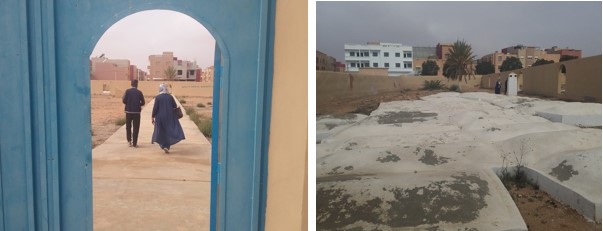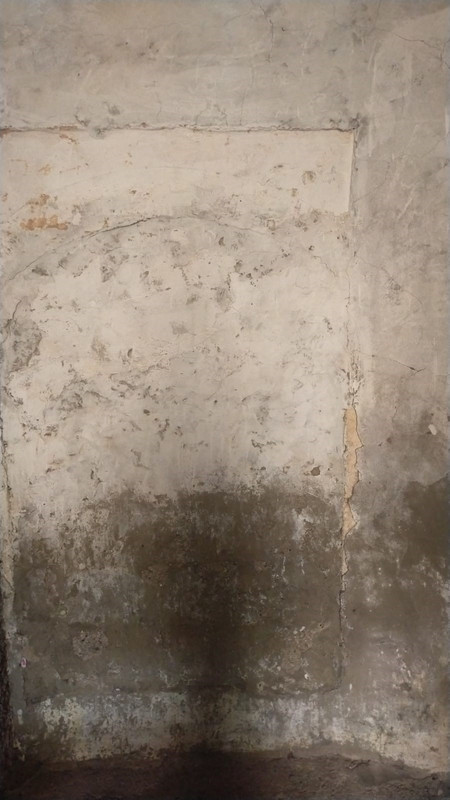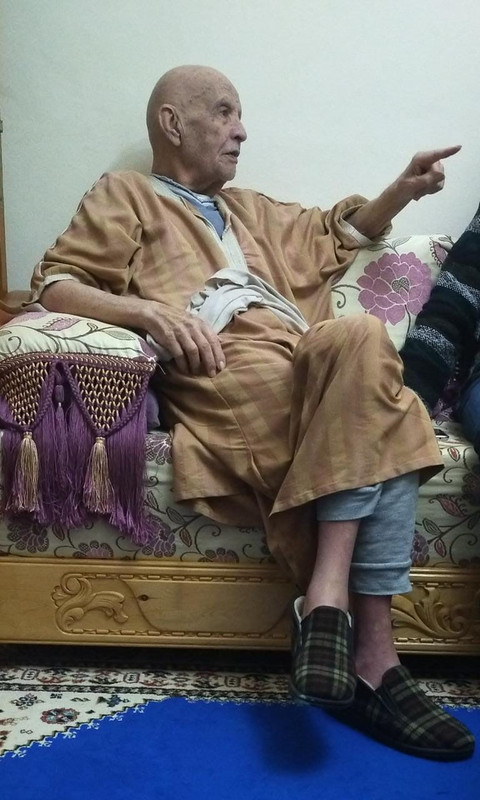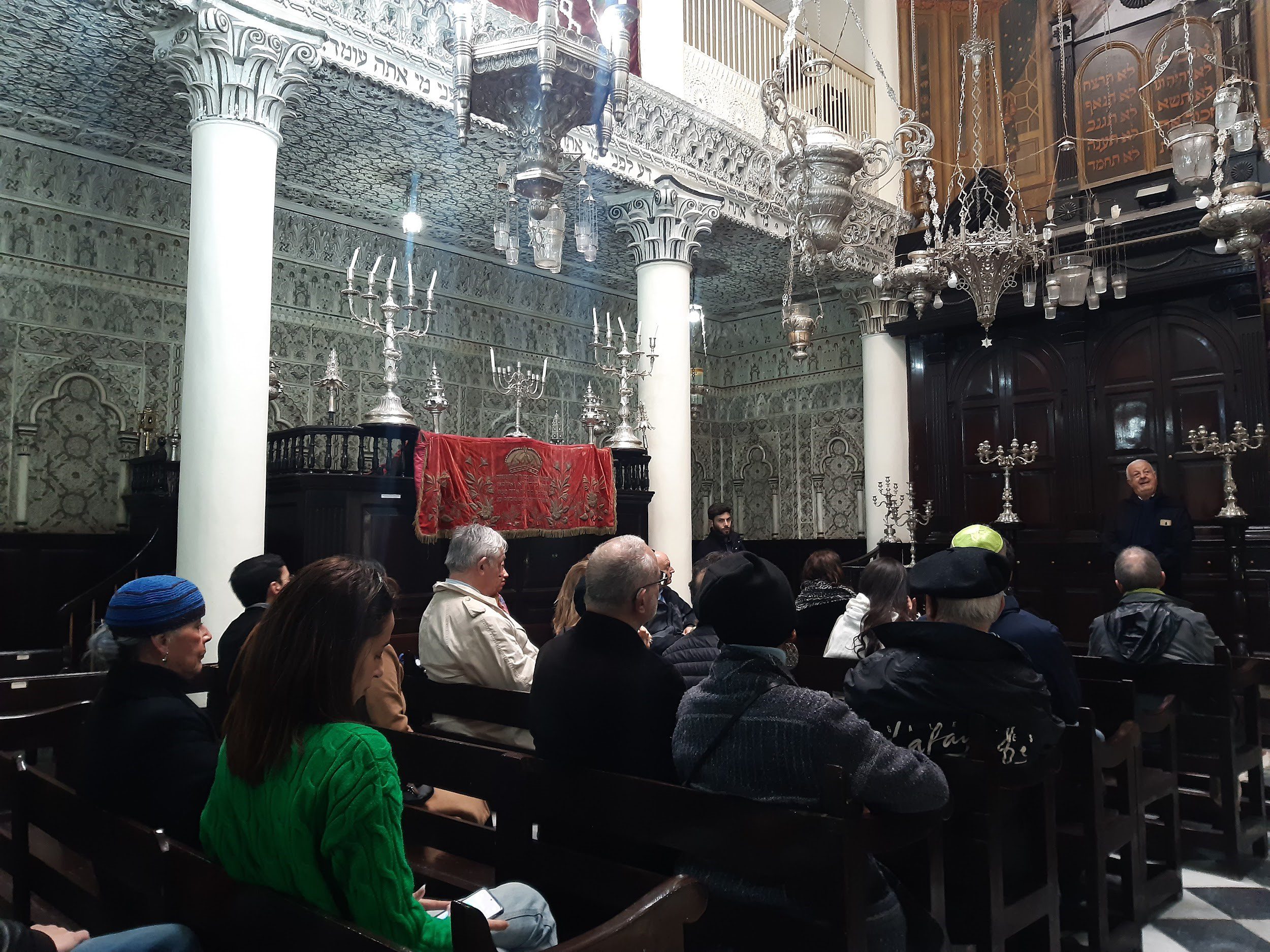By Omaima Khalil El Fanne, Dakira Cultural Coordinator

Cemetery of Tiznit, Photo credit: Jamal Maghiouzi/HAF
On Saturday, February 26, 2022, two Dakira Cultural Coordinators had the opportunity to visit the Jewish cemetery of Tiznit, which is located outside the Great Wall of Tiznit. This cemetery was restored in 2016 by Mrs. Georgette Moyale, a Jewish Moroccan living in the USA.
Buried in the cemetery were many of the Jewish community who lived in the Mellah of Tiznit before their departure to Jerusalem. They lived in the Mellah with their Muslim neighbors in peace and coexistence.
In the cemetery, we met its guardian and caretaker, who had taken the place of his father after his death; he has now been guarding the cemetery for 20 years. The cemetery is at least 300 years old and is frequently visited by Mrs. Moyale, whose parents are buried there, so a community between Agadir and the USA existed before the COVID-19 pandemic.
According to Mohamed Kana, the guardian, there are 61 graves in total and also graves of 3 children. The cemetery has a specific organization: the graves of men and women were separated from those of small children, and Mohamed said, “My father told me that the Jewish community brought back 3 corpses in the seventies, and they took others to the USA.” When asked what stories or memories he remembered about the people buried in the cemetery, Mohamed said, “Unfortunately, my father carried a lot of history about those people buried, as well as the communities that came at the time, but he buried everything with him.”
I interrupted him to inquire about the community that came before the pandemic, and whether he knows them closely, but he replied, ”No, they just came to visit the cemetery, praying for their dead, and I go with them to the Mellah before the synagogue, which was in the heart of the Mellah but closed by the commune.” I was surprised to hear this and asked him about the reason, to which he replied, “The synagogue had no guardian, so its condition deteriorated and it became occupied by vagrants.”

Dakira Cultural Coordinator with the guardian of the cemetery, Photo credit: Jamal Maghiouzi/HAF
He proposed that we plant trees and flowers that would contribute to the aesthetics of the cemetery, but he could not grant us this before he had the agreement of Mrs. Moyale, as she has the right to decide to do so. Moyale, who restored everything, also installed a supply of electricity and water to the cemetery.
Just after he offered to take us to visit the synagogue, even if it is closed, I asked him if he knows someone who has experienced the Jewish community during his residence in the Mellah of Tiznit. He replied, “Yes, L’Hajj Smayou, a man over 90 years old, I do not know if he is still alive or not, but we will visit him. L’Hajj Smayou is a memory of the Mellah of Tiznit.”

The door of the synagogue, which was closed by the municipality, Photo credit: Omaima Khalil El Fanne/HAF
When we arrived at the synagogue, we found it was just a white painted wall between two inhabited houses. There were children playing in front of it without knowing that it was an abandoned synagogue. Close to the synagogue in the old Mellah, we found the house of L’hajj Smayou, who welcomed us into his Moroccan living room, accompanied by his daughter Mina.

L‘Hajj Smayou during the interview, Photo credit: Omaima Khalil El Fanne/HAF
L’Hajj showed great joy and a beautiful smile. When asked about the Jewish community that lived in the Mellah, he said, “The house that is next to mine belonged to a Jewish family before they left it in the sixties.” During the discussion, Smayou’s daughter confirmed everything her father said and I asked her how she came to know these stories. Mina said, “My father often told us about his adventures with his brother and their Jewish friends. At each family gathering, we had a lot of fun with these stories, which made us laugh.” At the end, L’Hajj invited us to come back to his house, as did his daughter, who was aware that her father has a great memory of what happened in the Mellah at that time. She asked to keep all these memories in written articles so as not to lose them once her father is no longer there.
Omaima Khalil El Fanne is a Dakira Cultural Coordinator. The USAID Dakira program, implemented by the High Atlas Foundation and its partners, aims to strengthen inter-religious and inter-ethnic solidarity through community efforts that preserve cultural heritage in Morocco.
This article was completed with the support of the United States Agency for International Development (USAID), and the High Atlas Foundation is solely responsible for its content, which does not necessarily reflect the views of the USAID or the Government of the United States.








